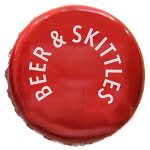Still often mistaken by many as a pub, the Old Borough Arms (bottom photo) on Rye’s Strand is now a guest house, but provides a fascinating glimpse into the social history of the town.
The Old Borough dates back, at least, to the 16th century when it was known by the sign of the “Blue” or “Blew Anchor”. The earliest reference to the Blew Anchor is in 1592 when it was kept by a carpenter John Hammond.
By 1728 it had become the London Trader, named after a type of coastal vessel plying between the south coast ports and London. It was then owned by the Corporation and rented to the landlord for £3.25 a year.
One noted landlord, James Shearer, is said to have quelled a potential riot. This saw local people confronting revenue men over plans to cut a new sluice which would have hindered the local smuggling trade.

The pub witnessed the birth of many societies. The Wellington Lodge of the Freemasons was formed there in 1814 and the Ancient Towns’ Benefit Society in 1828. The Unity Benefit Society was established at the pub in 1859 and was famed for its popular Goose Raffles.
During the great depression of the 1890s when beer consumption fell, the landlord tried a side-line selling green groceries from the taproom, bringing complaints from the police when he did this on a Sunday morning.
It was the same landlord who changed the name to the Borough Arms in 1897, which saw its slow decline (see top photo). The former taproom, now The Mermaid Tearooms, was at one time a customs and excise office, and then in the 1920s it became a labour employment exchange.
The Pubs of Rye, 1750-1950 by David Russell is available from The Rye Bookshop, 25 High Street, the Heritage Centre, Strand Quay; Adams, 9 High Street; or online www.hastingspubhistory.com. Other books by David Russell are The Pubs of Hastings & St Leonards, The Pubs of Lewes, The Swan, Hastings and Register of Licensees for Hastings & St Leonards.
Photos supplied by David Russell



